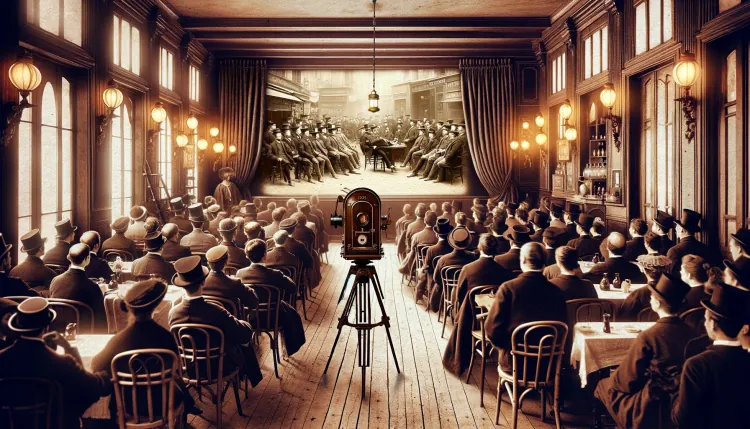The Birth of the Cinématographe: Revolutionizing Early Cinema
The transformative impact of the Cinématographe, invented by the Lumière brothers, on early cinema and its lasting legacy in film

-
Introduction
- Importance of the Cinématographe in film history
- Overview of the Lumière brothers' contribution
-
Genesis of the Cinématographe
- Background of the Lumière brothers
- Influence of the Kinetoscope
- Development and features of the Cinématographe
-
The First Films and Public Screening
- Description of early films by the Lumière brothers
- The historic first public screening
- Public reaction and the impact of their films
-
Impact and Legacy
- Contribution to entertainment and the arts
- The Cinématographe’s role in democratizing film production
- Lasting effects on modern cinema
-
Conclusion
- Summary of the Cinématographe's influence on cinema and culture
-
FAQs
- What was the first film made by the Lumière brothers?
- How did the Cinématographe differ from the Kinetoscope?
Revolutionizing Early Cinema: The Impact of the Cinématographe
Introduction
The late 19th century witnessed a monumental leap in storytelling and entertainment with the advent of the Cinématographe. Developed by the pioneering Lumière brothers, this device not only captured moving images but also projected them, radically changing how audiences experienced visual narratives. This article delves into the innovative journey of the Cinématographe, highlighting its profound impacts on early cinema and its enduring legacy.
Genesis of the Cinématographe
Originating in Lyon, France, within their father's photographic business, Louis and Auguste Lumière were inspired by the limitations of Thomas Edison's Kinetoscope, which lacked the capability to project films for larger audiences. Driven to enhance and expand the reach of moving images, the Lumière brothers engineered the Cinématographe—a portable, multi-functional device that revolutionized visual storytelling. Patented in February 1895, it boasted key features:
- Portability and Efficiency: Weighing just about 5 kilograms, it was designed for ease of transport and use in various settings.
- Dual-functionality: Unlike the Kinetoscope, it was capable of recording, developing, and projecting films, facilitating rapid dissemination.
- Mechanical Innovation: It utilized a hand-cranked mechanism and a unique intermittent film movement, enhancing image stability and film preservation.
The First Films and Public Screening
The debut of the Cinématographe occurred on December 28, 1895, at Paris's Salon Indien du Grand Café, presenting films like "Workers Leaving the Lumière Factory" and "The Arrival of a Train at La Ciotat Station". These films not only captivated audiences with their realism but also demonstrated the potential of cinema to capture ordinary aspects of human life.
Impact and Legacy
The Cinématographe transformed cinema from a technological novelty into a mainstream form of entertainment and artistic expression. It democratized film production and viewing, making it accessible across societal strata and fostering a new cultural medium. Moreover, it set foundational practices for documentary filmmaking and visual journalism, cementing the Lumière brothers' status as forefathers of modern cinema.
Conclusion
The invention of the Cinématographe by the Lumière brothers marked a pivotal moment in cultural history, blending technical innovation with creative vision. It not only expanded the horizons of film technology but also reshaped global cultural landscapes, influencing how we perceive, understand, and engage with the visual storytelling medium.
FAQs
- What was the first film made by the Lumière brothers? "Workers Leaving the Lumière Factory" is considered one of the first true motion pictures.
- How did the Cinématographe differ from the Kinetoscope? Unlike the Kinetoscope, the Cinématographe could project films to larger audiences and was portable, enabling outdoor filming and screenings.
This exploration of the Cinématographe underscores its monumental role in shaping cinema. For further insights into early cinema technologies and their evolution, visit Kiksee Magazine.
What's Your Reaction?






















